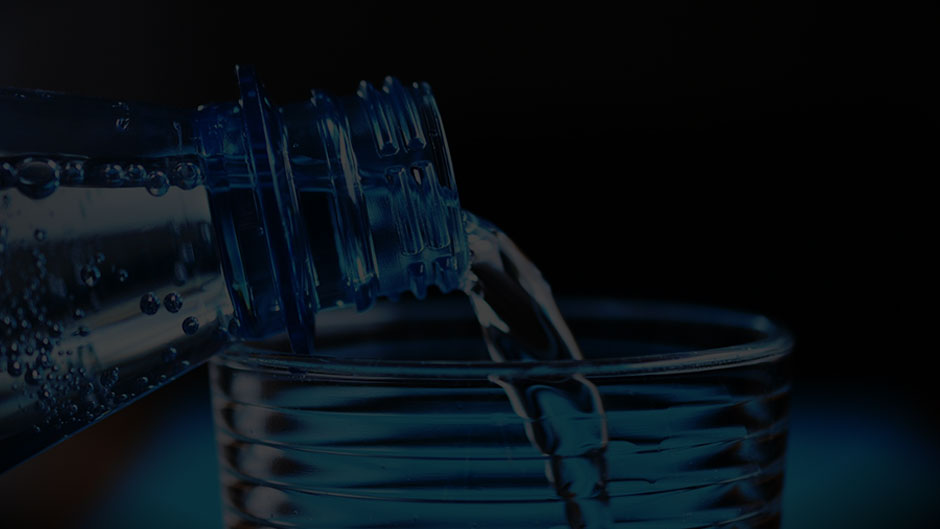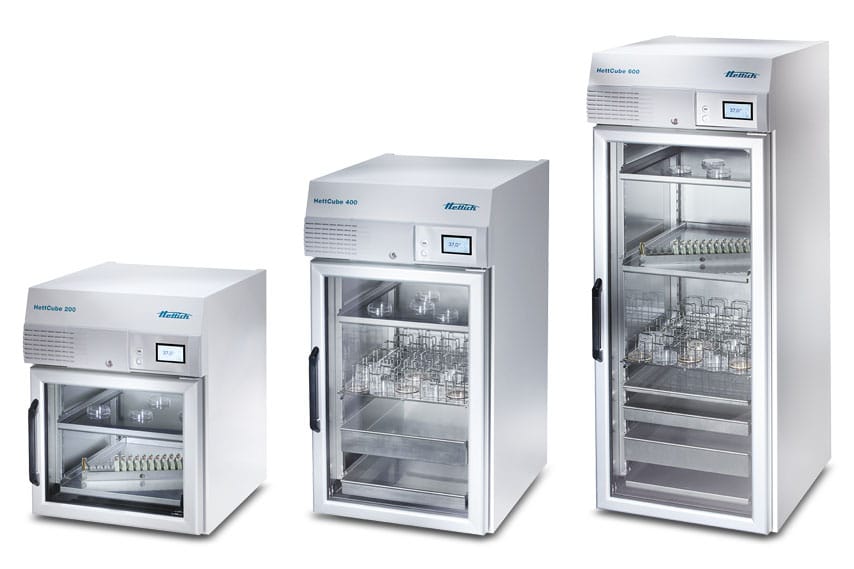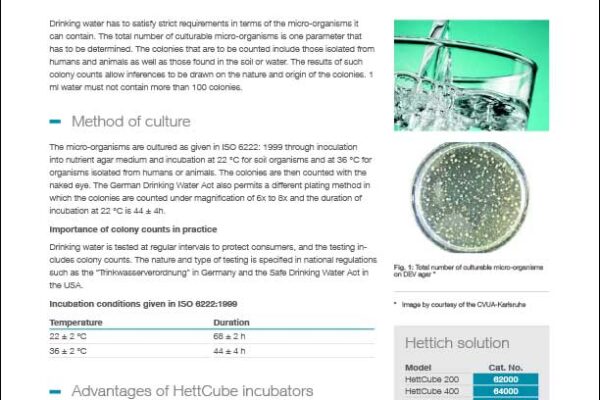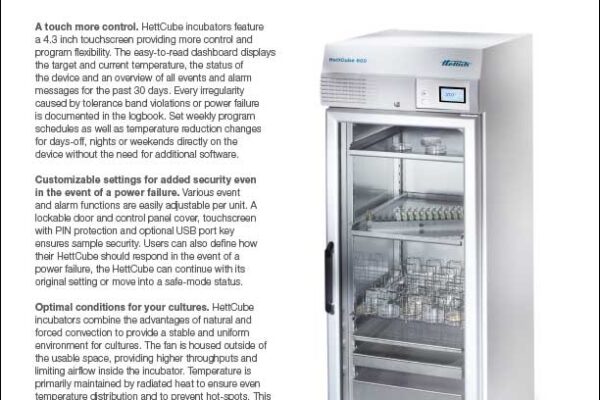The use of HettCube incubators and cooled incubators for colony counts in drinking water
Drinking water has to satisfy strict requirements in terms of the micro-organisms it can contain. The total number of culturable micro-organisms is one parameter that has to be determined. The colonies that are to be counted include those isolated from humans and animals as well as those found in the soil or water. The results of such colony counts allow inferences to be drawn on the nature and origin of the colonies. 1ml water must not contain more than 100 colonies.
METHOD OF CULTURE
The micro-organisms are cultured as given in ISO 6222: 1999 through inoculation into nutrient agar medium and incubation at 22 °C for soil organisms and at 36 °C for organisms isolated from humans or animals. The colonies are then counted with the naked eye. The German Drinking Water Act also permits a different plating method in which the colonies are counted under magnification of 6x to 8x, and the duration of incubation at 22 °C is 44 ± 4h.
IMPORTANCE OF COLONY COUNTS IN PRACTICE
Drinking water is tested at regular intervals to protect consumers, and the testing includes colony counts. The nature and type of testing is specified in national regulations such as the “Trinkwasserverordnung” in Germany and the Safe Drinking Water Act in the USA.
Incubation conditions are given in ISO 6222:1999
ADVANTAGES OF HETTCUBE INCUBATORS
- Maximal validated usable space on a small footprint
- 4.3-inch touch display for intuitive operation
- Very homogeneous and stable temperature, as well as precise temperature control
- True “one-hand-operation” and flexible positioning of the shelves
- Minimal energy consumption of < 0.06 kW/h at 37 °C




